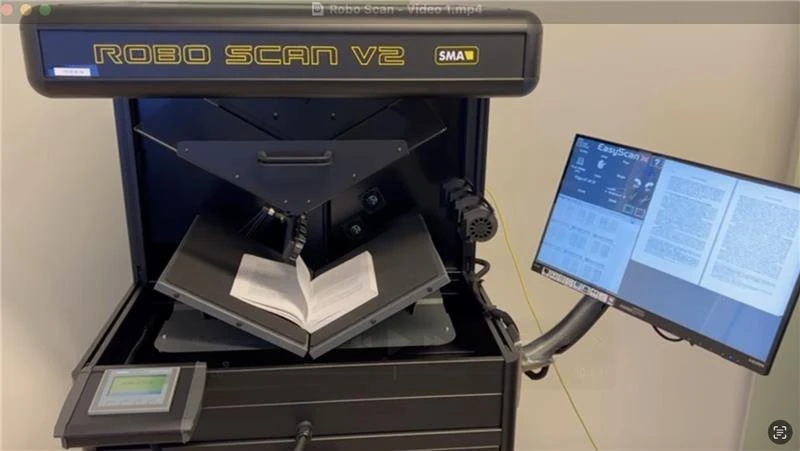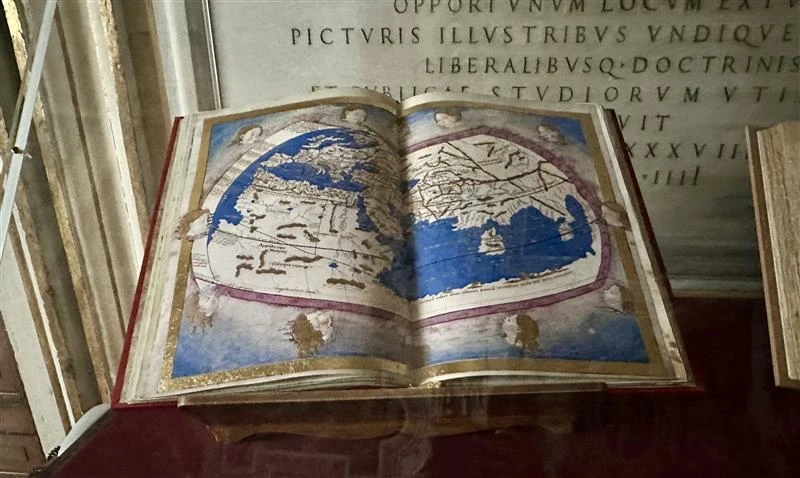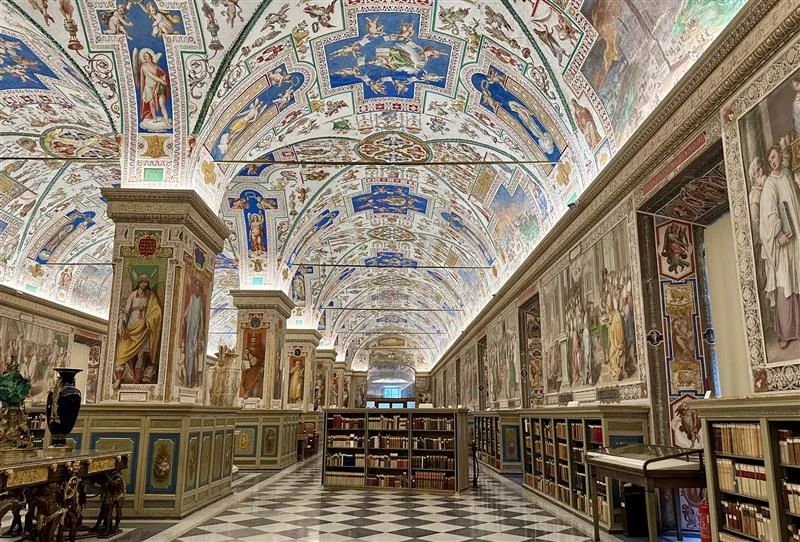Since then, the Alexandria Digitization Hub’s workload has grown. Longbeard is currently working to digitize the historic collections of the Salesian Pontifical University and the Pontifical Gregorian University and plans to work with the Pontifical University of St. Thomas Aquinas and the Venerable English College, as well as several religious orders, to digitize some or all of their collections.
Digitized works can be folded into a growing Catholic dataset, training Longbeard’s AI systems such as Magisterium AI and an upcoming Catholic-specific language model, Ephrem. Institutions can choose to make their texts public or keep them private. Scholars can search across collections, generate summaries, or trace an AI-generated answer back to its source.
 A robotic scanner used in the Alexandria Digitization Hub courtesy of Longbeard. Credit: Courtney Mares/CNA
A robotic scanner used in the Alexandria Digitization Hub courtesy of Longbeard. Credit: Courtney Mares/CNA
The system also enables translation through Vulgate AI. Sanders recounted stumbling upon an untranslated papal document on St. Thomas More: “I never knew this existed. It was in Latin. It hadn’t been translated. We ingested it through Vulgate, and suddenly I was able to read it.”
“When you actually go to the hub and see a book being scanned, and an hour later that work is available to anyone in the world to query in any language — that’s when you realize what this really means,” he said.
(Story continues below)
For now, the Vatican Library is taking a more cautious approach to artificial intelligence and robotics. Janz explained why he believes manuscripts in particular require a human touch rather than automation.
For scholars, he said, “the reason this manuscript is interesting is because in this specific place, it has a word which is different from other manuscripts — maybe it’s just one letter that changes it from a word into a different word,” Janz explained. “It’s that little difference that makes this book so valuable.” This type of work requires 100% accuracy, he added. Even if automated AI transcription reaches “99.9% accuracy … it’s basically useless.”
Sanders said he “wholeheartedly” agrees that for “the deep, meticulous work of textual criticism, the original manuscript is the ultimate authority, and a human expert is irreplaceable,” but he added that “to limit the role of AI to mere transcription is to miss its revolutionary potential.”
“AI, even with a 99.9% accuracy rate, transforms these silent collections into a dynamic, queryable database of human knowledge,” he said. “It allows a researcher to ask, ‘Show me all 15th-century manuscripts that discuss trade with the Ottoman Empire,’ and get instantaneous results from collections across the globe. It can identify patterns and conceptual links that were previously undiscoverable. The AI finds the needles in the haystack; the scholar is then free to perform the exacting analysis on the invaluable originals.”
 A manuscripts on display in the Sistine Hall of the Vatican Apostolic Library. Credit: Courtney Mares/CNA
A manuscripts on display in the Sistine Hall of the Vatican Apostolic Library. Credit: Courtney Mares/CNA
For the Vatican Library, the digitization effort has also been integrated into its conservation efforts of these historic texts. “Every manuscript that goes to the scanners first goes to our conservation workshop and is thoroughly examined to make sure that … it can stand the strain of being digitized,” Janz said. “When the digitization is done, it goes back to the conservation workshop again, and they check to see if anything has changed.”
“We’ve discovered many manuscripts that needed to be fixed, needed conservation work as a result of going through each and every one and looking at it,” he said.
Still, the Vatican Library is not ignoring AI altogether. It is developing a project to catalog illustrations from medieval manuscripts, making images searchable by theme. In partnership with Japanese researchers, it is also training machine learning models to transcribe medieval Greek handwriting. “It will make mistakes and we tell it what the mistakes are … maybe eventually it will get to a point where it can do things reliably,” Janz said.
In the future, Janz said he would love to see technology make it possible to have transcriptions of all of their manuscripts in the historic languages available for scholars.
As for AI, he remains cautious. “I think we’re pretty open to it. I think we shared the same concerns about AI that everyone else has.”
Inside the Vatican Library’s Sistine Hall, an ornate series of frescoes traces the long history of libraries and learning: Moses receiving the Law, the library of Alexandria, the apostles recording the Gospels. Sanders sees his AI project as continuing in the mission of ensuring that the wisdom from the past is “shared as broadly as possible.”
“If we are going to progress as a civilization, we have to learn from those who came before us,” he said. “Part of this project is making sure their reflections and insights are available today.”

